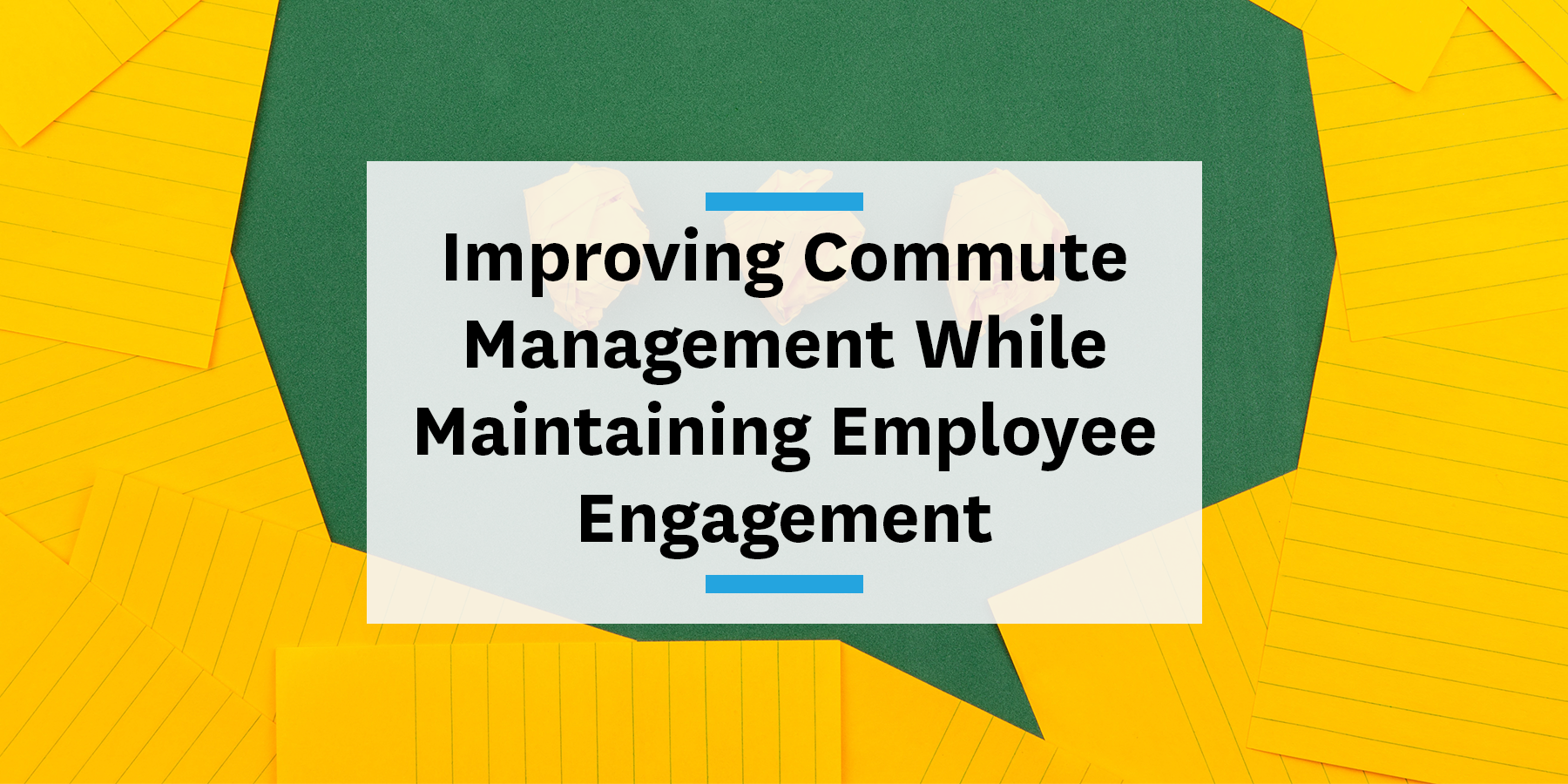Employee benefits may only come to mind for your employees once a year when they have to re-enroll in a new health plan. Unlike health benefits, however, commuter benefits can be updated at any time throughout the year to accommodate behavior change and shifts in habits. That means you need to make sure they think about how commuter benefits are working for them, and help them make changes throughout the year.

Onboarding
The best time to inform your employee about the commuter benefits is their first week with the company, or even before they start. Your employee onboarding process gives you an opportunity to encourage smart commuting methods before drive-alone habits are formed.
This is also an opportunity for you to gather information about new employee commutes. When starting a new job, the commute is one of the first things new or potential employees have to figure out. When going through the onboarding process, asking them about their commute plan gives you a baseline idea, plus they’re already filling out plenty of forms — what’s one more? From there, you can work with them to adopt a sustainable commute – it’s a win-win situation.
Commute Planning
For companies engaged with their employees on commutes, especially where a TDM plan is in place to help people choose more sustainable ways to get to work, a commute planning tool is helpful. With a commute planning tool like Actionfigure Insights, employees can enter where they are commuting from and see comprehensively their options inclusive of price, time, and other factors. This is one of the best ways to maintain engagement with employees about thier commutes.
Surveying
Depending on your city, surveys to measure the success of your TDM strategy is legally required. Seattle-based employers, for example, need to survey their employees twice a year about which TDM measures are working and how they can improve.
Even if you’re not required to survey your employees, it’s still in your best interest to gain feedback. Many of your employees’ situations may be changing. Employees move houses or apartments, they have family obligations, and with schedule changes, commutes can change too. It’s important for you to stay up-to-date with the commutes your employees are taking to ensure they’re happy.
Interviewing
If you feel like surveys aren’t working, you can try to get more personal. Just like you conduct customer interviews to hear about what’s working with your product, you should conduct employee interviews to see what’s working with their commutes. One-on-one interviews can give you more in-depth insights about which benefits are working, which could be improved, and maybe some you don’t need to move forward with at all.
This form of communication is harder for larger organizations to complete with every single employee, but that doesn’t mean you can’t do with some. If you’re at a company with more than 100 employees, you can select a few employees based on their commuting habits and move forward with interviews from there. This gives you a mix of insights about the different commuter benefits and the extent of your TDM offerings.
A major advantage of these interviews is the ability to keep employee engagement. Rather than sending out a survey that employees may or may not answer, this is one-on-one, giving employees the opportunity to go into detail about their commutes. It also gives you an opportunity to connect with employees, making them feel valued.
Managing
When it comes to communicating your commute management solutions, sending a memo isn’t going to be enough. Emails get caught up in inboxes and general Slack messages can get lost in the shuffle. In the case every employee doesn’t read about new offerings, you need the information to live somewhere more permanent.
Housing all of your commuting solutions, including a commute planning tool on your HR management system or in your company wiki or intranet will come in handy. Employees aren’t regularly thinking about their benefits, and many times only look into things when something happens and they need to find answers. Rather than creating more work for your HR team, your Employee Transportation Coordinator, or your commute manager, you can have it live in an easily accessible location for when employees go looking.




